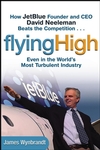I’ve been thinking about how organizations today are more distributed and decentralized, relying on the performance at the interface to the customer. Compared to core competencies that power the creation of new products and live deep within the company, most companies have one or more particular capabilities that live at the fringes where organizations exert their last influence over performance before the consumer takes over. I’m starting to collectively refer to these capabilities as edge competencies (yes it’s a little jargony, but core capabilities probably was as well back in 1990).
For example, Coca-Cola’s core competency is the manufacture and distribution of nonalcoholic beverages, and their edge competency is how they create brands through marketing campaigns.
T-Mobile’s core competency is building telecommunications infrastructure, and their edge competency is the design of each customer-facing service.
The concept becomes interesting when you think about how executives crafting the organization’s strategy must align with one or two particular project teams doing tactical work (incidentally, I think the dichotomy of strategic and tactical is less useful in these situations, since the importance of edge project work can have deep importance to the organization).
There should also be a feedback loop between core competencies and edge competencies, so that customers are both informed and have a voice in crafting an organization’s work.
More to come…
Update: More is here… I’ve expanded this idea into an essay and renamed it Strategic Delivery Points to avoid any confusing comparisons between it and core competencies. Enjoy.

 Just finished James Wynbrandt’s
Just finished James Wynbrandt’s  In all the hoo-hah about China’s economy we almost never hear of the human rights situation there anymore. The reason is not that the situation has vastly improved, in fact it’s
In all the hoo-hah about China’s economy we almost never hear of the human rights situation there anymore. The reason is not that the situation has vastly improved, in fact it’s